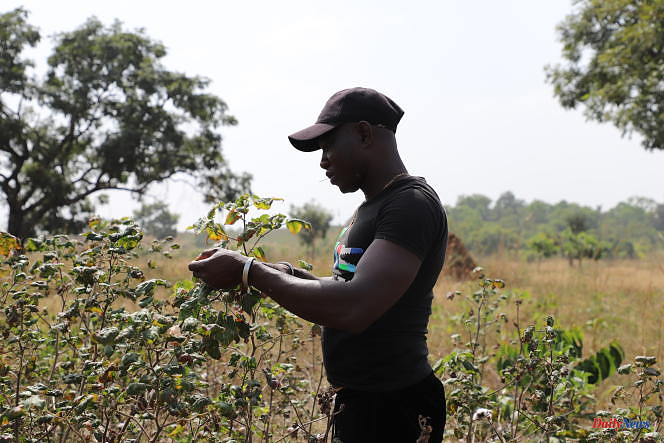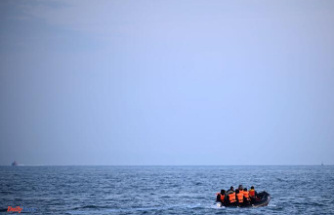Lazeni Soro is 56 years old, forty of whom spent in the cotton fields. A raw material that allowed this producer to become a very respected man and the chief of the village of Dihi, a few kilometers from Korhogo, in the north of Côte d'Ivoire. Thanks to his 17 hectares, the planter is proud to say that he has managed to educate his 28 children, aged 8 to 19. But this year, "it will be more difficult to support the family", he annoys: "I've never seen that. His harvest could drop from 40 to 5 tons of cotton.
He is not the only one to face this "catastrophic year", as Bakary Soro Coulibaly, technical adviser of the Ivorian Cotton Company (COIC), describes it, taking a look at the notebook in which the tonnages of Dihi producers are recorded. . In Korhogo, the cleaning and ginning units of COIC, one of the largest cotton companies in the country, are idling. “Employees work two or three months instead of the usual five or six,” compares Lassina Dagnogo, production manager.
Because since June 2022, thousands of farmers have been facing, almost helpless, the attacks of the jassides. Well known here, these insect pests regularly strike cotton fields in the north of the country but are most often controlled by insecticides during the different phases of plant growth.
Appearing at the start of the campaign, the jassides proved to be more resistant this time to the products used by the producers. And for good reason: "It's a new species that has appeared in our fields and has spread throughout the cotton zone," reveals Malanno Kouakou, entomologist at the National Center for Agronomic Research (CNRA), in Bouaké. The species, discovered for the first time in India, would have arrived in West Africa due to "globalization and commercial exchanges", thinks the researcher.
Two new insecticides
While growers were used to a tiny white insect, this one is green with two black dots on its back. "And this species is more mobile," notes the entomologist, who works with six other researchers on cotton issues: "It grows on different plants, different crops, which makes it difficult to control. It has an ability to multiply faster than others. »
In this regional crisis, the CNRA prides itself on having been the first laboratory to raise the alarm thanks to an early warning system that it would like to see extended to neighboring countries. Its researchers have developed two new insecticides from existing active ingredients. Tested in the laboratory and in the field, they will be available during the next campaign.
"Obviously, these are polluting products, but the quantities we use meet the standards," we assure the CNRA. "And these are short-term products, emergency solutions", emphasizes Malanno Kouakou, who advocates long-term biocontrol methods: "We need to study this species more, find its weak points, observe its natural enemies in our own ecosystem, better manage water by developing irrigation systems adapted to cotton growing. In the meantime, researchers are also working on creating more resistant varieties, such as cotton with "hairy" leaves that would have the ability to ward off pests.
For Côte d'Ivoire, which is one of the top 5 cotton producers in Africa, there is no longer any question, as expected, of breaking the record of 550,000 tonnes produced last year. Half of the harvest could be lost, according to specialists in the sector. If insects have also struck in Senegal, Mali, Burkina Faso and Togo, the disaster here takes on the magnitude of "a national drama", in the words of Prime Minister Patrick Achi during a trip to the region in November, during which he promised aid to support a booming cotton industry.
Lazeni Soro, accustomed to the good cotton years, makes very large loans every year to pay for his inputs, his employees and his intermediaries. But this year, he will not be able to repay the 4.6 million CFA francs (about 7,000 euros) invested in the campaign. "Producers go into debt to produce their cotton," says Adama Silué, Director General of COIC. But today, in the absence of sufficient production, the majority of them are unable to repay. We are in crisis. »
Climate deregulation
According to the Cashew Cotton Council (CCA), in charge of regulating the sector and making the link between the 132,000 producers and the government, "the State has undertaken to buy back the debts of the producers during a presidential council which was held during January". A new potential aid when the State has already had to curb the soaring price of fertilizers in 2022 with subsidies.
For researchers and players in the sector, climate change is to blame for the multiplication of these infestations. "The campaign starts in May, June, when it's the rainy season. And if during the first months there are pockets of drought lasting more than ten days, this becomes a favorable condition for the installation of the pest,” develops Malanno Kouakou. During dry periods, which are increasingly long in the north of the country, the insect, in search of water, draws on the sap of cotton plants to feed itself, which dries out the plants and prevents their development.
For agroecologist Gaoussou Roger Soro, general manager of the NGO Animation Rural de Korhogo, this crisis is also the result of poor agricultural practices. “In our region, land is degraded due to chemical inputs and land pressure,” he observes. Producers no longer have other areas to work in and cannot practice crop rotation, which would allow the land to breathe. In this context, the plant could better resist pests. »
In recent months, some producers have expressed their desire to abandon cotton cultivation. But faced with this crisis, they can for the moment count on an important measure taken by the sector several years ago, that of subsidizing each year part of the inputs for food crops that allow them to feed their families. The CCA estimates that 3 million people depend on cotton income in Côte d'Ivoire.












